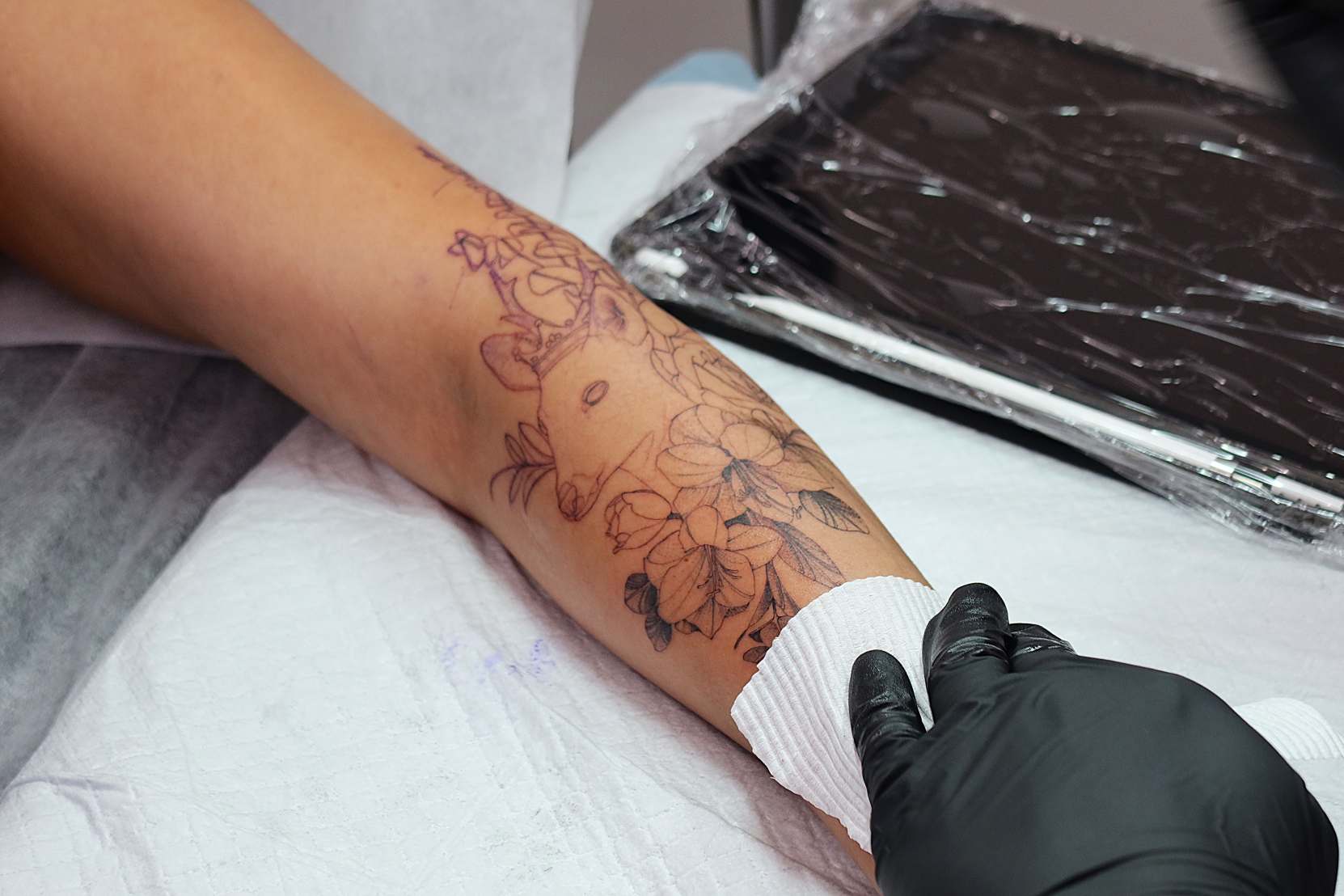Starting a career in tattooing can feel overwhelming, especially when you’re unsure what the learning journey actually looks like. Unlike traditional apprenticeships where progression varies wildly depending on your mentor, comprehensive tattoo courses provide structured pathways from complete beginner to confident professional. Understanding what to expect at each stage of your tattoo education helps you prepare mentally, financially, and practically for this transformative career change.
The Reality of Starting from Zero
Your Starting Point Doesn’t Define Your Potential
Many aspiring tattoo artists worry they lack the artistic background necessary for success. The reality is that comprehensive tattoo courses are designed to develop both technical skills and artistic abilities, regardless of your starting point. While some artistic inclination helps, dedication and consistent practice matter more than natural talent.
Common beginner backgrounds include:
- Graphic designers seeking hands-on creative work
- Beauty professionals expanding their skill set
- Art enthusiasts ready to turn passion into profession
- Career changers seeking creative fulfillment
- Recent graduates exploring alternative career paths
Setting Realistic Expectations
Professional tattooing requires mastering multiple complex skills simultaneously. A comprehensive course doesn’t create overnight experts but provides the foundation and framework for ongoing development. Most students require 6-12 months of dedicated study followed by 1-2 years of practical experience to feel truly confident as professional artists.
Understanding this timeline helps maintain motivation during challenging learning phases and prevents unrealistic expectations that can lead to frustration or premature course abandonment.
Phase 1: Foundation Building (Weeks 1-4)
Health, Safety, and Legal Framework
Your journey begins with essential but unglamorous fundamentals that form the backbone of professional practice. This phase covers infection control protocols, sterilization procedures, workspace setup, and legal requirements for operating as a tattoo artist in Australia.
Key learning outcomes include:
- Understanding bloodborne pathogen risks and prevention
- Mastering sterilization equipment and procedures
- Learning proper waste disposal and contamination prevention
- Familiarizing yourself with Australian tattooing regulations
- Developing professional consultation and consent procedures
While this material may seem dry compared to artistic training, these skills separate professional artists from amateur tattooers and ensure client safety and business viability.
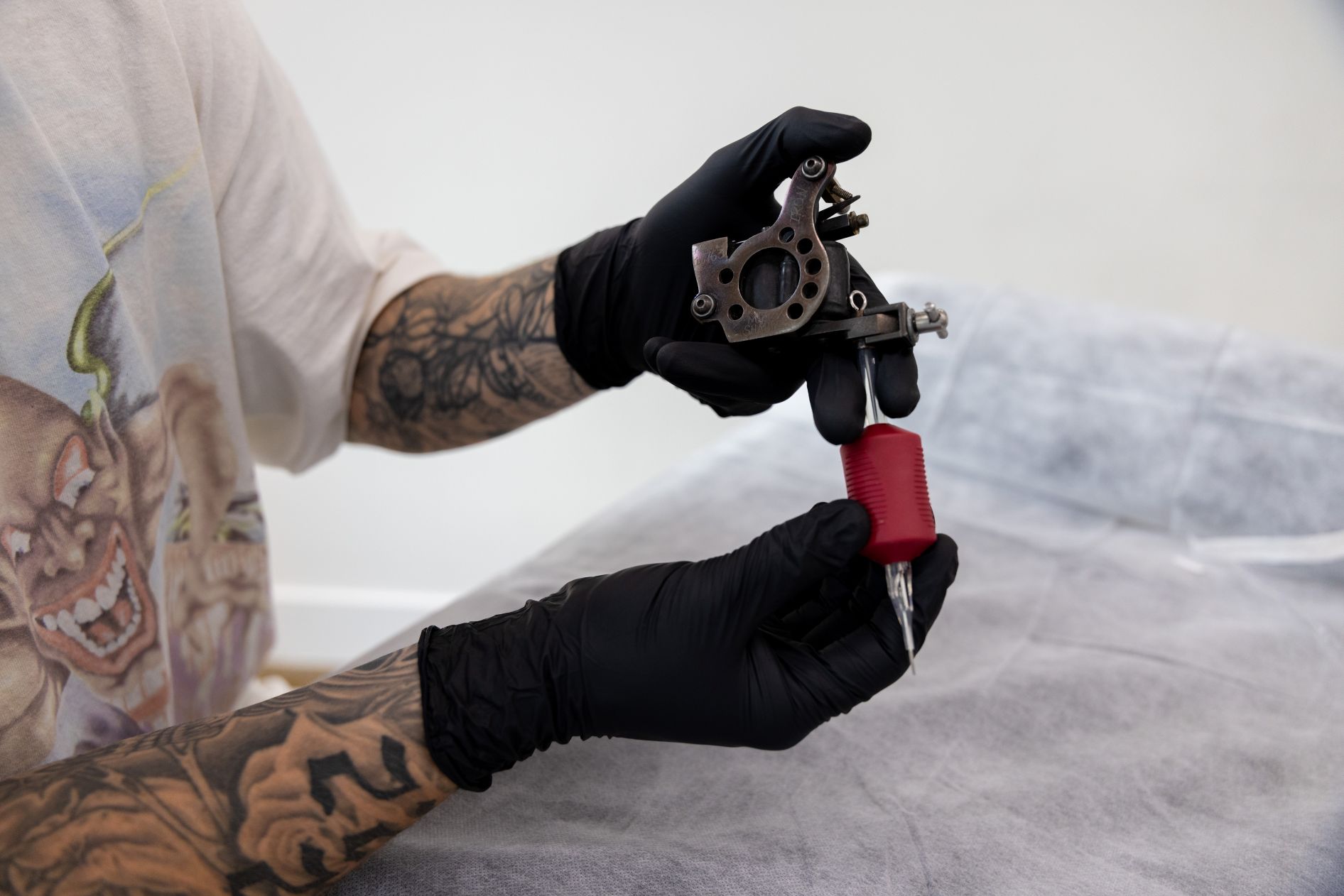
Equipment Familiarization and Basic Operation
During this phase, you’ll learn to identify, set up, and operate professional tattoo equipment. This includes understanding different machine types, needle configurations, power supply settings, and ink preparation procedures.
Equipment mastery involves:
- Assembling and disassembling tattoo machines properly
- Understanding needle groupings and their applications
- Learning proper machine tuning and troubleshooting
- Practicing ink mixing and consistency preparation
- Developing smooth, controlled hand movements
Many students find equipment operation more challenging than expected. Professional machines require finesse and understanding that develops through repetition and guided practice.
Fundamental Design Principles
Even if you have artistic background, tattoo-specific design principles differ significantly from other art forms. You’ll learn how skin texture, body contours, and healing processes affect design choices and execution.
Design education covers:
- How skin properties influence line work and shading
- Adapting designs for different body areas and curves
- Understanding scale, proportion, and placement principles
- Learning color theory specific to tattooing
- Developing skills in design transfer and stencil creation
Phase 2: Skill Development (Weeks 5-12)
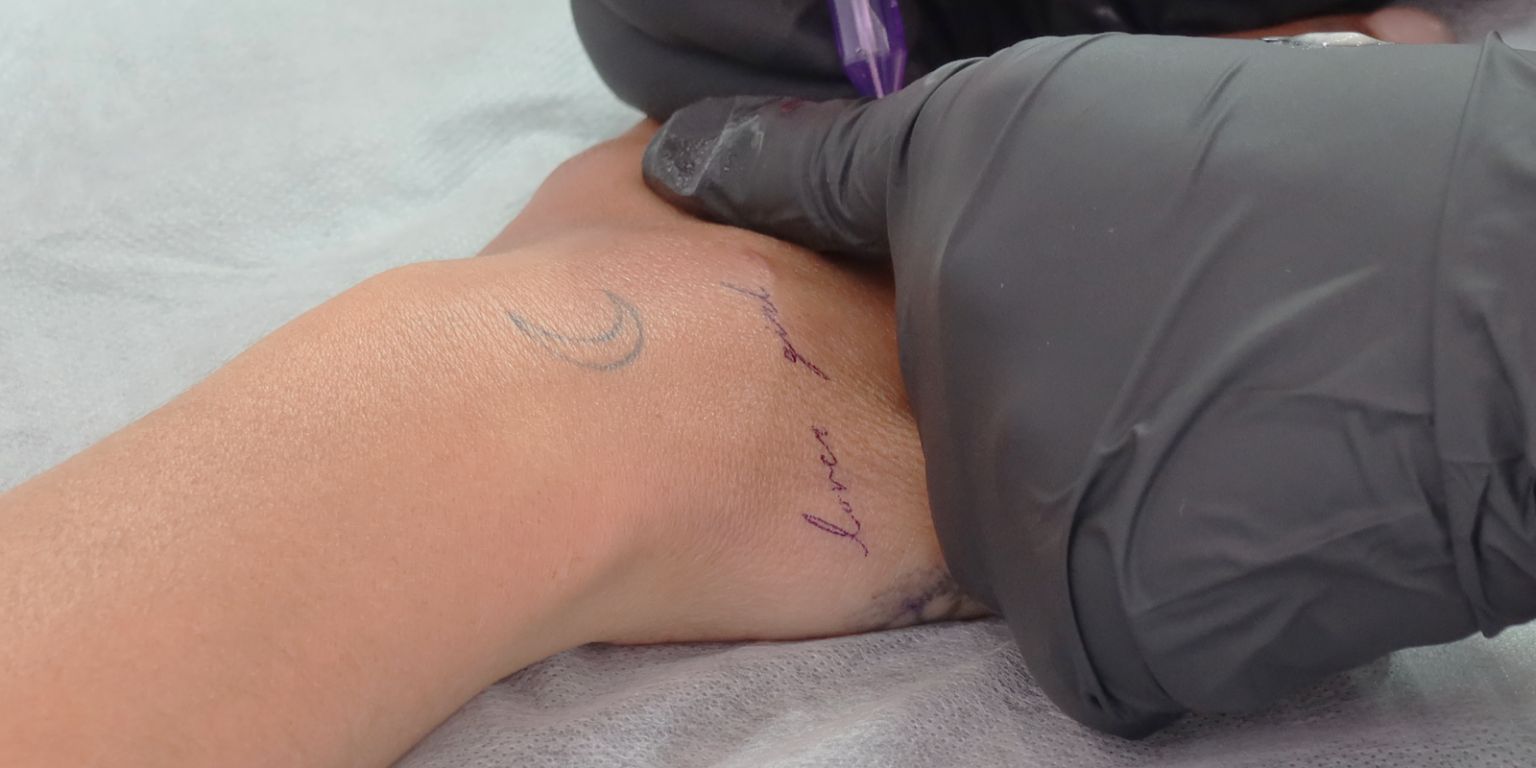
Practice Skin and Technique Refinement
Once you understand equipment and safety fundamentals, intensive practice begins. Most courses provide practice skins that simulate human skin properties, allowing safe technique development without risking client harm.
Practice progression typically follows:
- Basic line work: Developing steady, consistent lines of varying weights
- Curve mastery: Learning to follow stencil curves smoothly and accurately
- Shading techniques: Building gradual tonal transitions and solid fills
- Speed development: Increasing efficiency while maintaining quality
- Problem solving: Learning to correct mistakes and adjust techniques
This phase can be frustrating as your artistic vision exceeds your technical execution. Persistence and consistent practice are crucial for breakthrough moments when skills begin clicking together.
Color Theory and Application
Working with tattoo inks requires understanding how pigments interact with skin tones, heal over time, and fade or shift colors. This knowledge prevents common beginner mistakes that result in muddy colors or unexpected healing outcomes.
Color education includes:
- Understanding skin undertones and color selection
- Learning color mixing and saturation techniques
- Mastering color packing and blending methods
- Understanding how colors heal and age in skin
- Developing skills in color correction and touch-ups
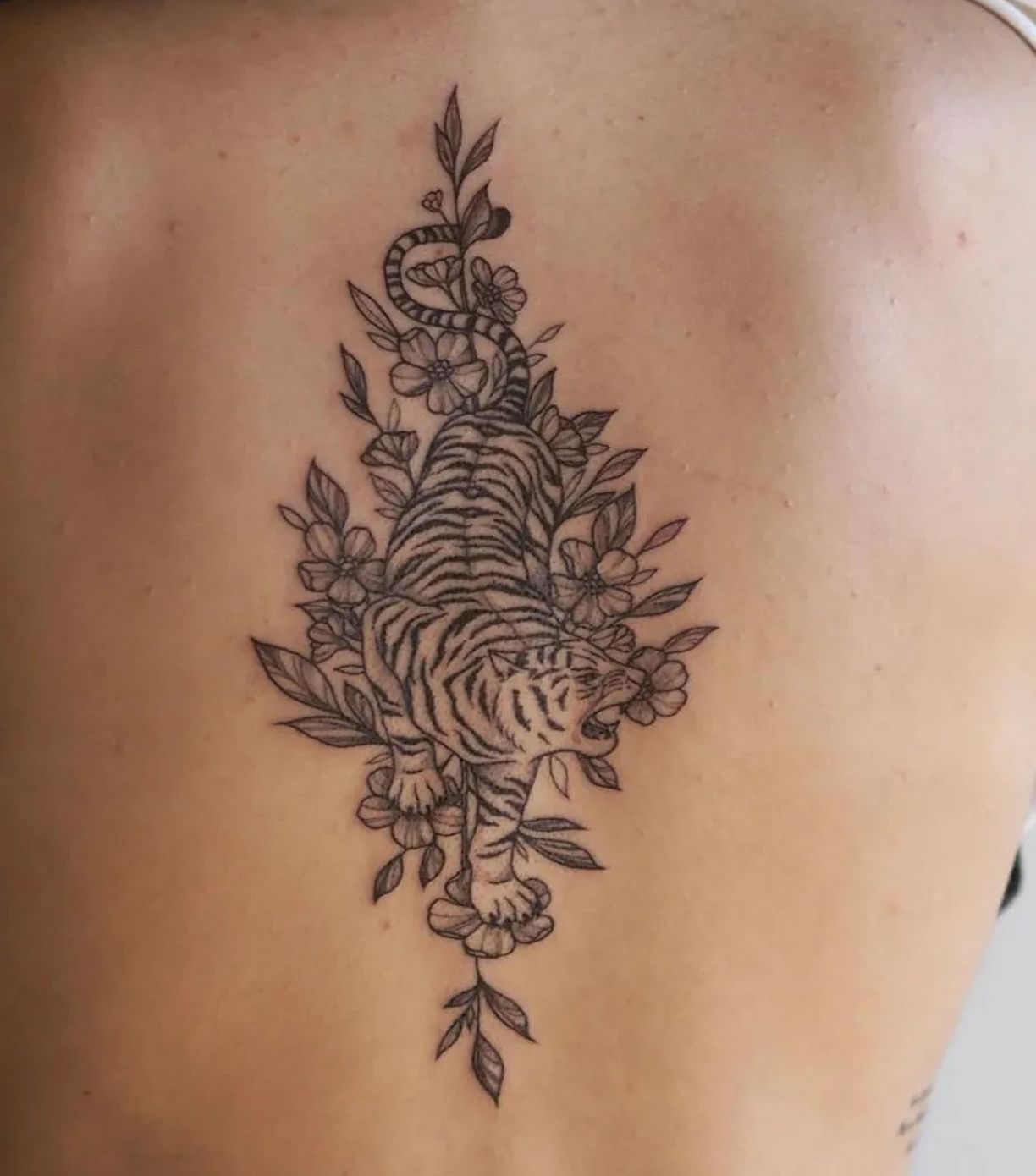
Style Exploration and Development
Comprehensive courses expose students to multiple tattoo styles, helping identify natural inclinations and market opportunities. Rather than forcing specialization immediately, quality programs encourage exploration and gradual focus development.
Style exploration covers:
- Traditional and neo-traditional approaches and techniques
- Realism and portrait work requiring advanced shading skills
- Fine line and minimalist styles growing in popularity
- Geometric and dotwork patterns requiring precision and patience
- Lettering and script work with unique technical challenges
Phase 3: Advanced Techniques (Weeks 13-20)
Complex Design Execution
As basic skills solidify, courses introduce more challenging projects requiring integration of multiple techniques. These advanced assignments simulate real client work and develop problem-solving abilities essential for professional practice.
Advanced projects include:
- Multi-session large pieces requiring planning and consistency
- Cover-up work requiring creative problem-solving
- Custom design development from client concepts
- Technical challenges like portraits or detailed realism
- Collaborative pieces requiring artistic adaptation
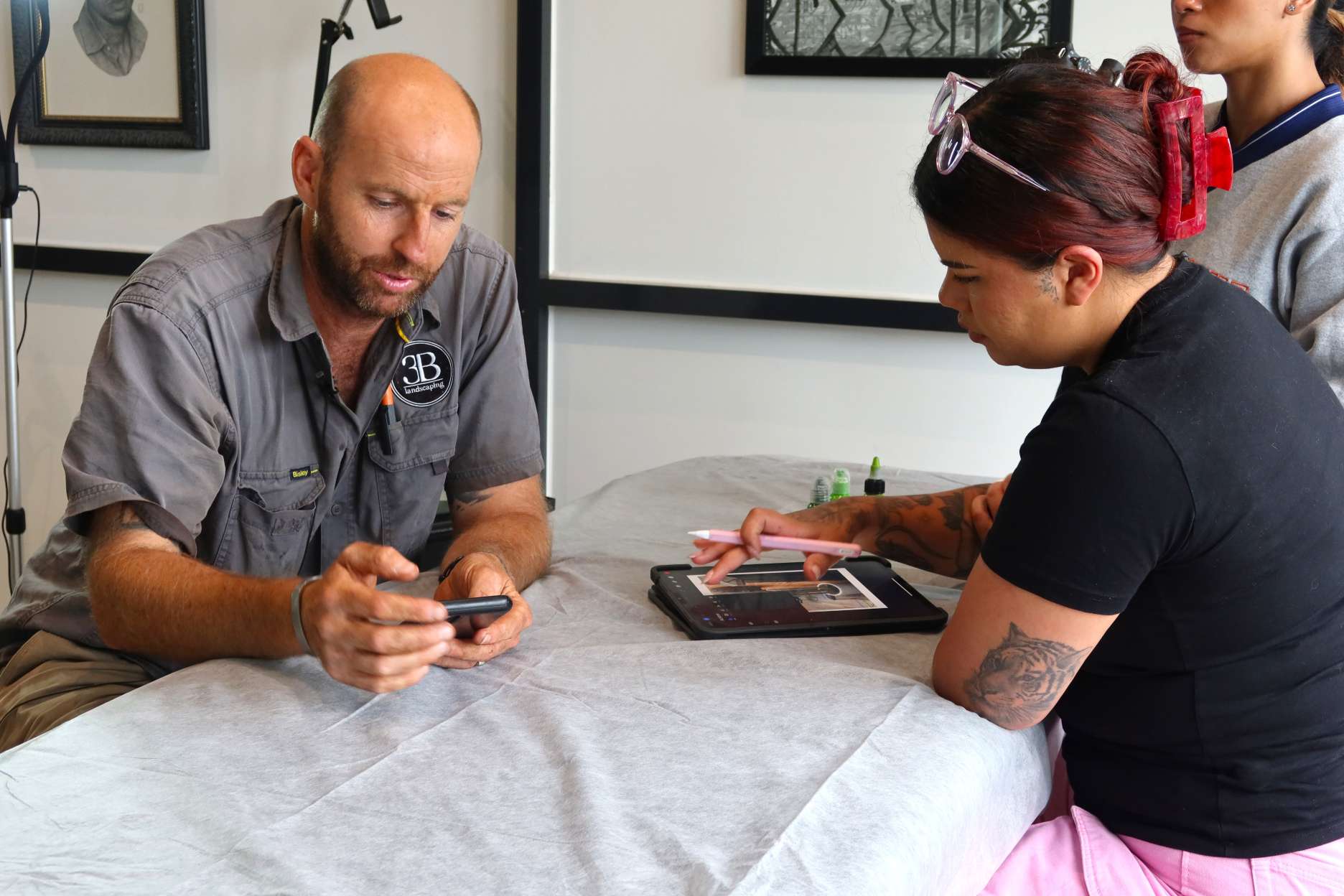
Client Interaction and Professional Skills
Technical tattooing skills alone don’t guarantee professional success. Advanced phases include comprehensive training in client relations, consultation procedures, and business communication.
Professional development covers:
- Conducting thorough client consultations and managing expectations
- Explaining aftercare procedures and addressing concerns
- Handling difficult clients and challenging situations
- Developing pricing strategies and service offerings
- Building professional portfolios and marketing materials
Portfolio Development and Documentation
Throughout the course, you’ll build a comprehensive portfolio demonstrating skill progression and style development. Quality courses provide guidance on photography, presentation, and portfolio organization that showcases your abilities effectively.
Portfolio requirements typically include:
- Documentation of skill progression from early to advanced work
- Examples across multiple styles and techniques
- Before and after photos showing healing progression
- Custom design work demonstrating creativity and client collaboration
- Professional presentation suitable for employment or client consultations
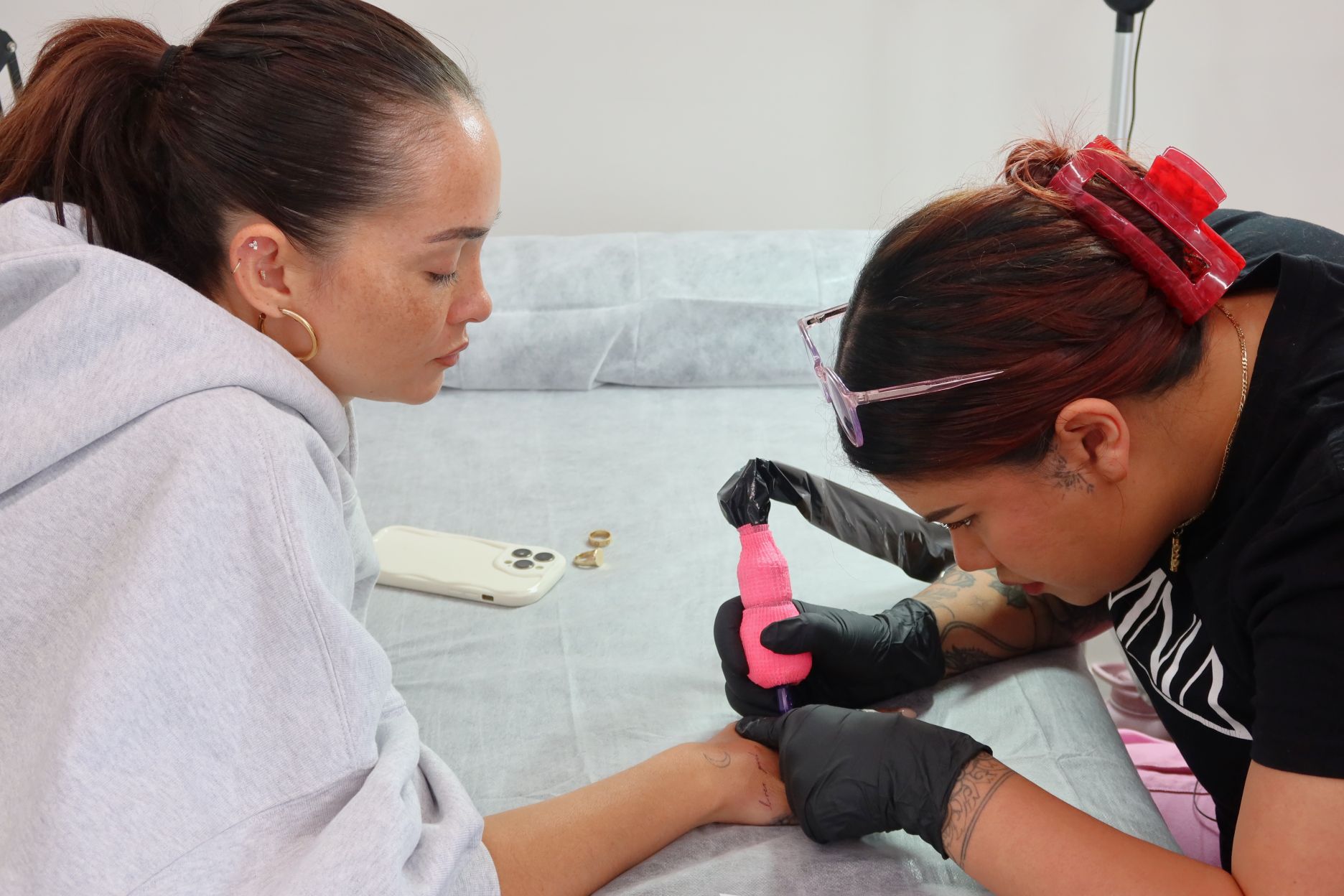
Phase 4: Professional Preparation (Weeks 21-24)
Real-World Application and Assessment
The final phase focuses on applying learned skills in realistic scenarios. This may include working on volunteer models, participating in mock client consultations, or completing comprehensive practical assessments.
Professional preparation includes:
- Supervised practice on live models
- Comprehensive practical and theoretical examinations
- Business planning and career development guidance
- Industry networking and job placement assistance
- Ongoing education and skill maintenance planning
Career Transition Planning
Completing a course doesn’t automatically translate to professional success. Quality programs provide career transition support, helping graduates navigate employment opportunities, establish independent practices, or secure apprenticeship positions.
Career support typically covers:
- Resume and portfolio preparation for tattoo industry employment
- Interview preparation and professional presentation skills
- Business planning for independent practice development
- Continuing education opportunities and specialization pathways
- Alumni networks and ongoing mentorship programs
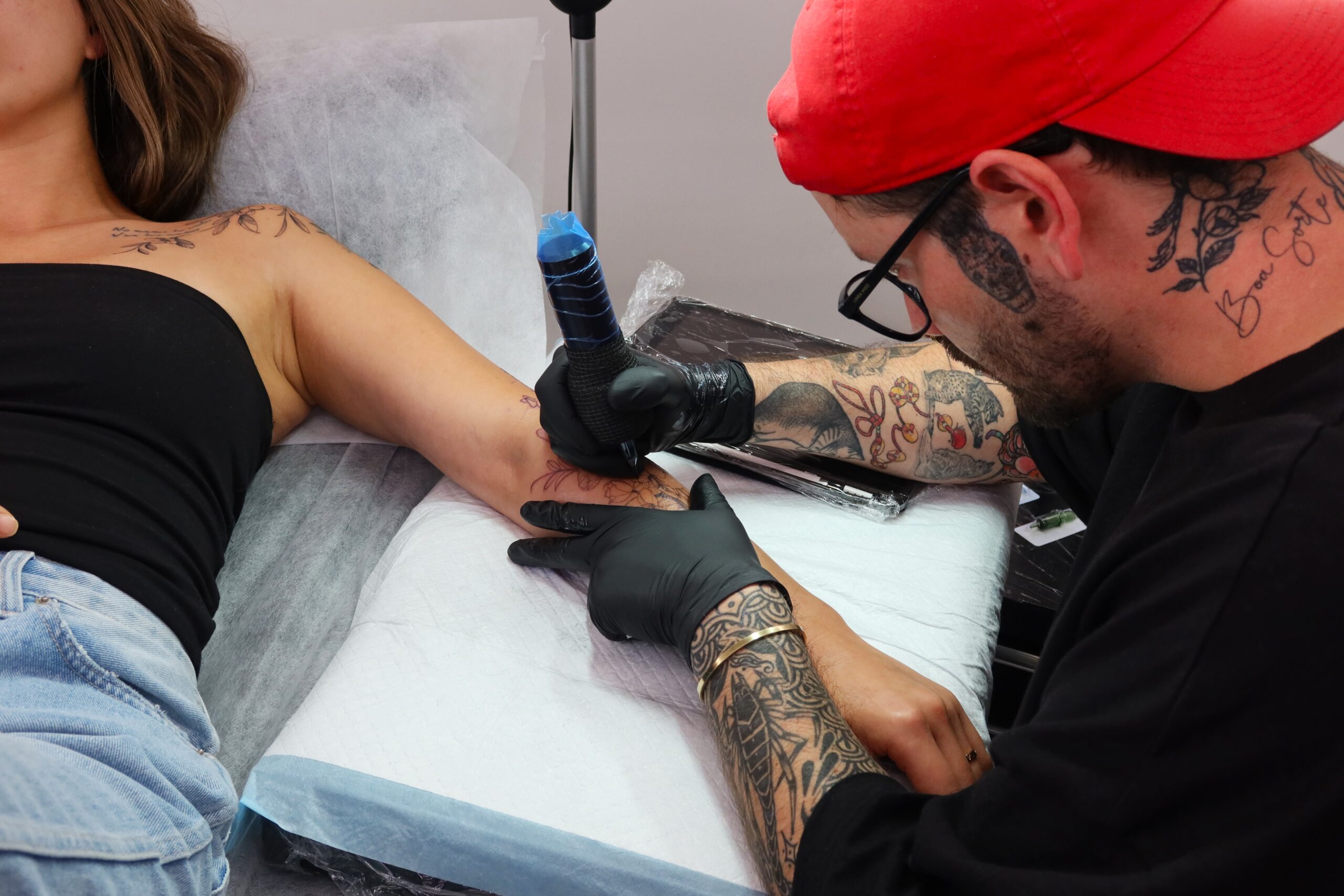
Common Challenges and How to Overcome Them
The Confidence Gap
Most students experience periods where their artistic vision exceeds their technical execution abilities. This gap can be discouraging but represents normal learning progression rather than personal inadequacy.
Overcoming confidence issues:
- Focus on measurable skill improvements rather than comparing yourself to established artists
- Celebrate small victories and technique breakthroughs
- Seek regular feedback from instructors and peers
- Practice consistently even when motivation wanes
- Remember that professional development continues years beyond course completion
Technical Frustrations
Learning proper machine operation, achieving consistent line weights, and developing smooth shading techniques requires extensive practice. Many students underestimate the physical and mental coordination required for professional tattooing.
Managing technical challenges:
- Break complex techniques into smaller, manageable components
- Practice fundamental movements until they become automatic
- Record practice sessions to identify improvement areas
- Seek additional instruction when struggling with specific techniques
- Accept that mastery requires time and consistent effort
Time Management and Life Balance
Comprehensive courses require significant time investment while most students maintain other responsibilities. Balancing course demands with work, family, and personal commitments challenges many students.
Effective time management strategies:
- Create realistic study schedules that account for other commitments
- Prioritize hands-on practice over passive learning when time is limited
- Use flexible online access to study during optimal personal times
- Communicate with family and employers about educational goals and time requirements
- Focus on consistent progress rather than intensive cramming sessions
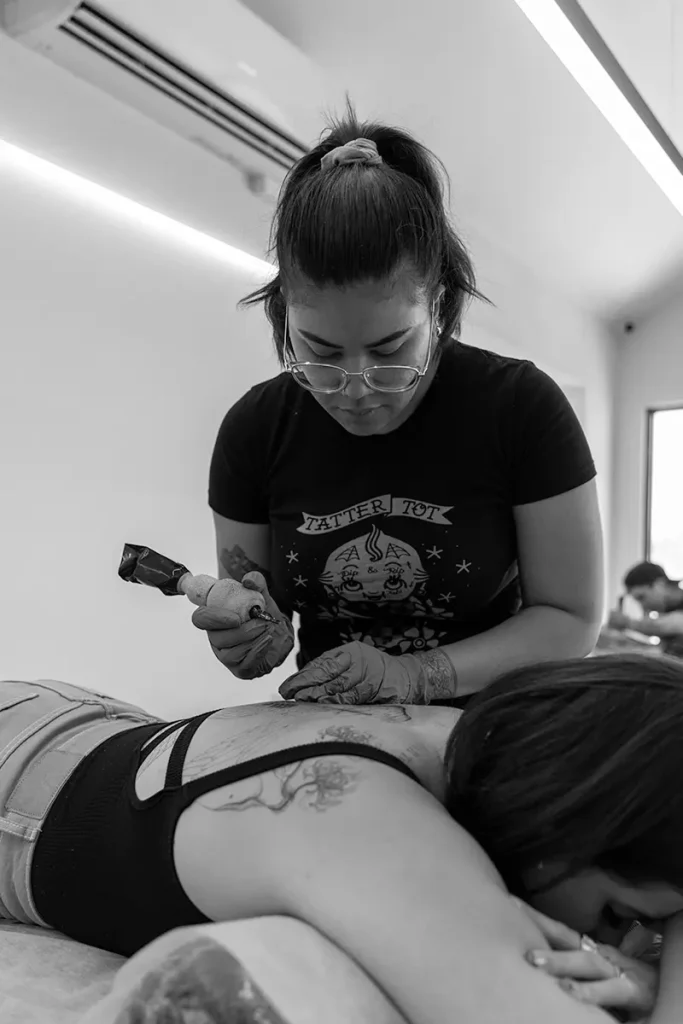
What Success Looks Like at Each Stage
Month 1: Foundation Mastery
- Comfortable with equipment setup and sterilization procedures
- Understanding of basic safety protocols and legal requirements
- Ability to create simple, clean lines on practice materials
- Familiarity with different needle types and their applications
Month 3: Technical Development
- Consistent line work with varying weights and curves
- Basic shading and gradation techniques
- Understanding of color theory and ink properties
- Ability to follow complex stencils accurately
Month 6: Skill Integration
- Completion of multi-technique pieces combining lines, shading, and color
- Development of personal style preferences and strengths
- Comfortable client consultation and communication skills
- Professional portfolio demonstrating skill progression
Month 12: Professional Readiness
- Ability to execute professional-quality tattoos across multiple styles
- Comprehensive understanding of business and client management
- Strong portfolio suitable for employment or independent practice
- Confidence in problem-solving and adapting to challenging situations
Building Your Professional Network
Instructor Relationships
Course instructors often become long-term mentors and professional references. Building strong relationships with experienced artists provides ongoing guidance, career opportunities, and industry connections.
Peer Connections
Fellow students represent your professional peer group and future industry colleagues. Many successful artists maintain relationships built during training, leading to collaboration opportunities, referrals, and mutual support.
Industry Integration
Quality courses provide opportunities to connect with established professionals, attend industry events, and participate in tattoo community activities. These connections often prove crucial for career development and business growth.
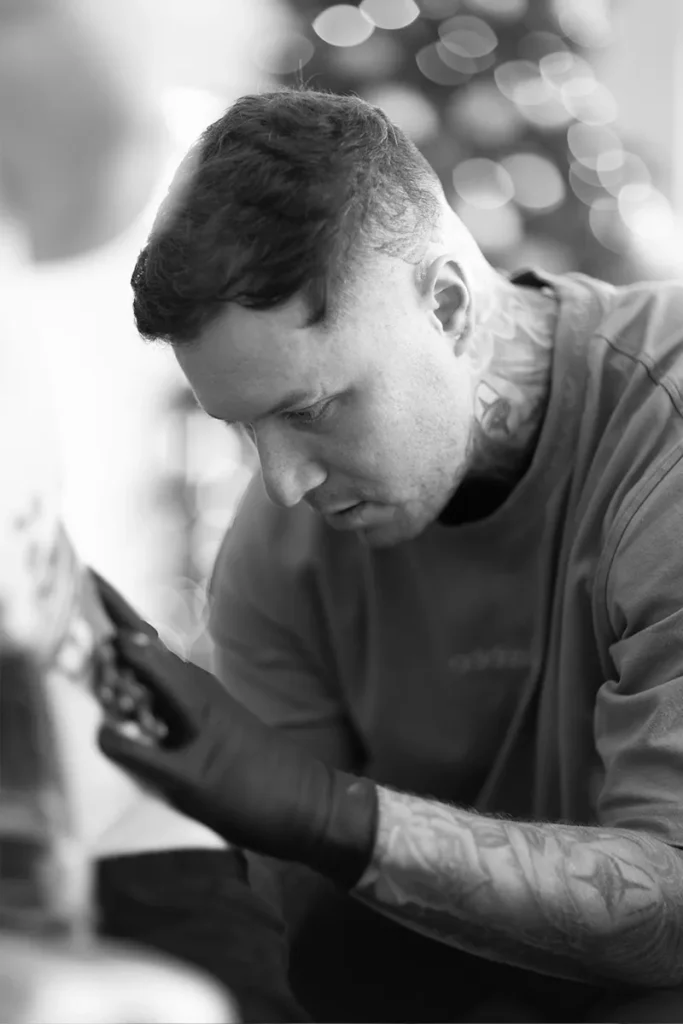
Realistic Timeline Expectations
Course Completion to First Professional Work
Most graduates require 3-6 months after course completion before feeling ready for independent professional work. This period typically involves continued practice, portfolio refinement, and often additional mentorship or junior position experience.
Developing Client Base and Reputation
Building a sustainable tattoo practice requires 1-3 years of consistent work, professional development, and reputation building. Success depends on technical skills, business acumen, marketing efforts, and local market conditions.
Achieving Full Professional Competence
Most tattoo artists consider themselves fully competent professionals after 3-5 years of active practice. This timeline includes ongoing education, specialization development, and mastery of advanced techniques and business skills.
The Ongoing Learning Commitment
Continuous Skill Development
Professional tattooing requires lifelong learning as techniques evolve, equipment improves, and client preferences change. Successful artists commit to ongoing education, workshop attendance, and skill refinement throughout their careers.
Industry Evolution and Adaptation
The tattoo industry continues evolving rapidly, with new styles, techniques, and technologies emerging regularly. Professionals must stay current with trends, safety protocols, and business practices to remain competitive.
Personal Artistic Growth
Beyond technical proficiency, successful tattoo artists continuously develop their artistic vision, personal style, and creative problem-solving abilities. This growth often distinguishes good technicians from exceptional artists.
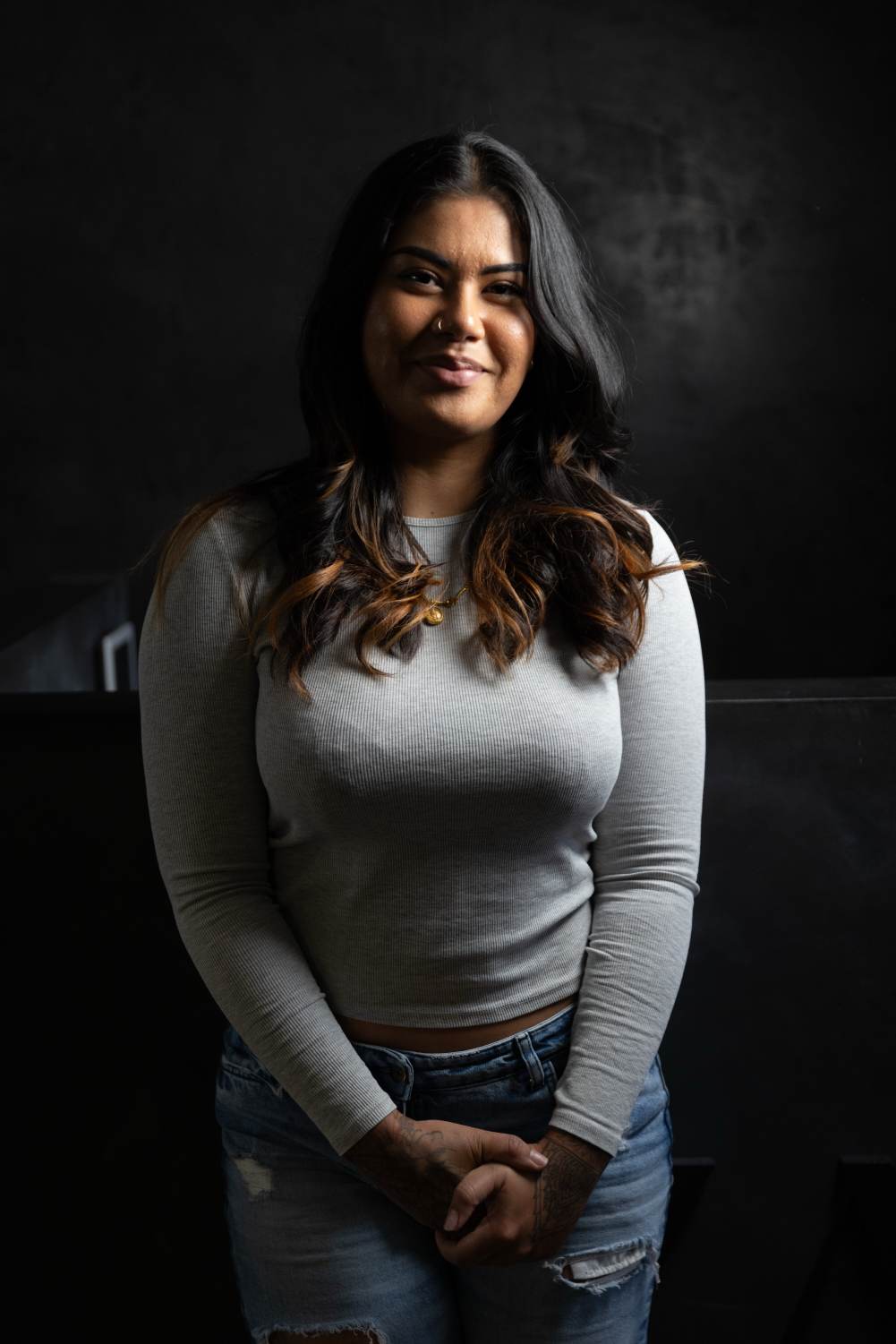
Conclusion: Your Journey Awaits
Understanding what to expect from a comprehensive tattoo course helps you prepare for both challenges and rewards ahead. While the journey requires dedication, practice, and persistence, quality education provides the foundation for a fulfilling creative career serving clients and expressing artistic vision.
Remember that course completion marks the beginning rather than end of your professional development. The skills, knowledge, and connections gained during training provide the platform for ongoing growth and success in the dynamic, rewarding tattoo industry.
Your journey from beginner to professional represents more than skill acquisition – it’s a transformation that opens doors to creative expression, entrepreneurial opportunities, and meaningful connections with clients who trust you to create permanent art on their bodies. With realistic expectations, dedicated effort, and quality education, this transformation becomes an achievable and rewarding reality.


